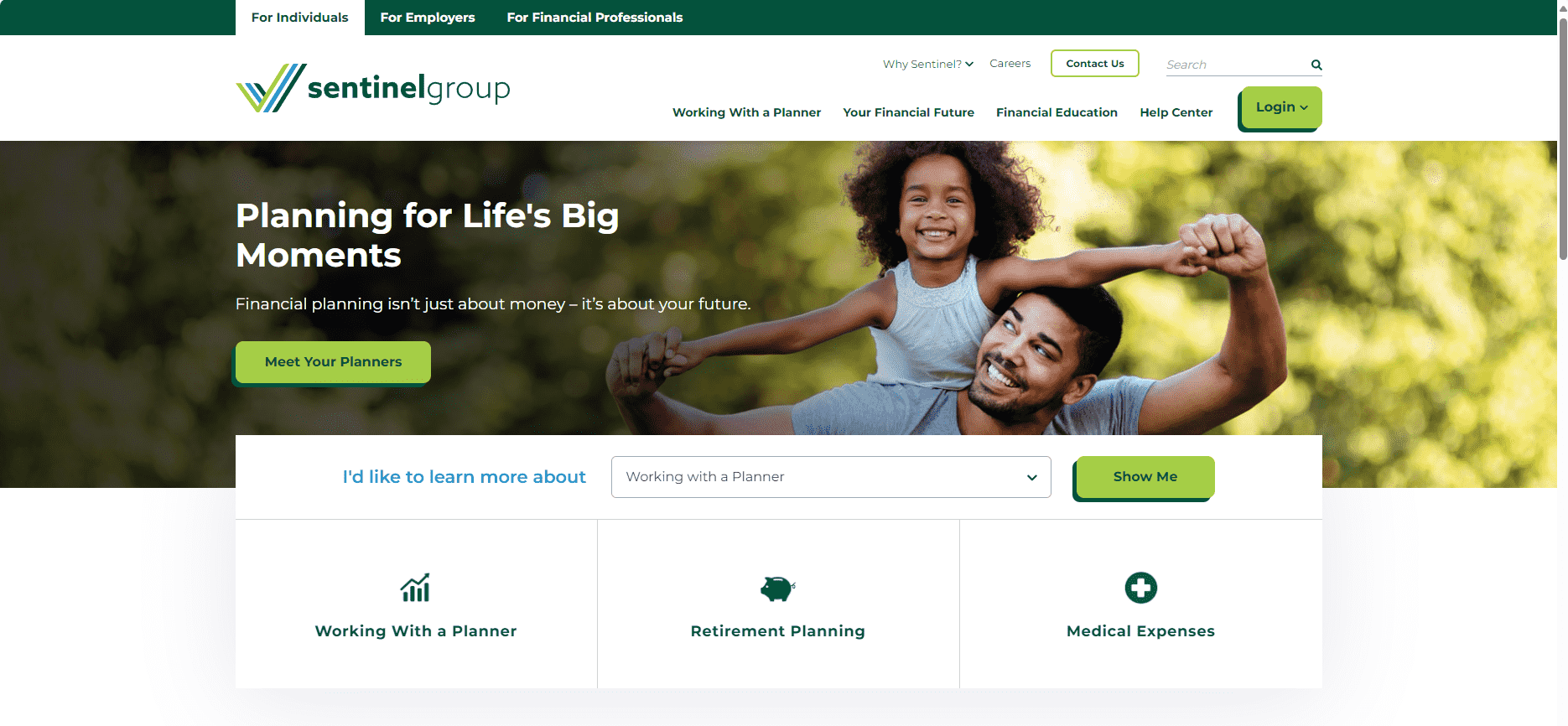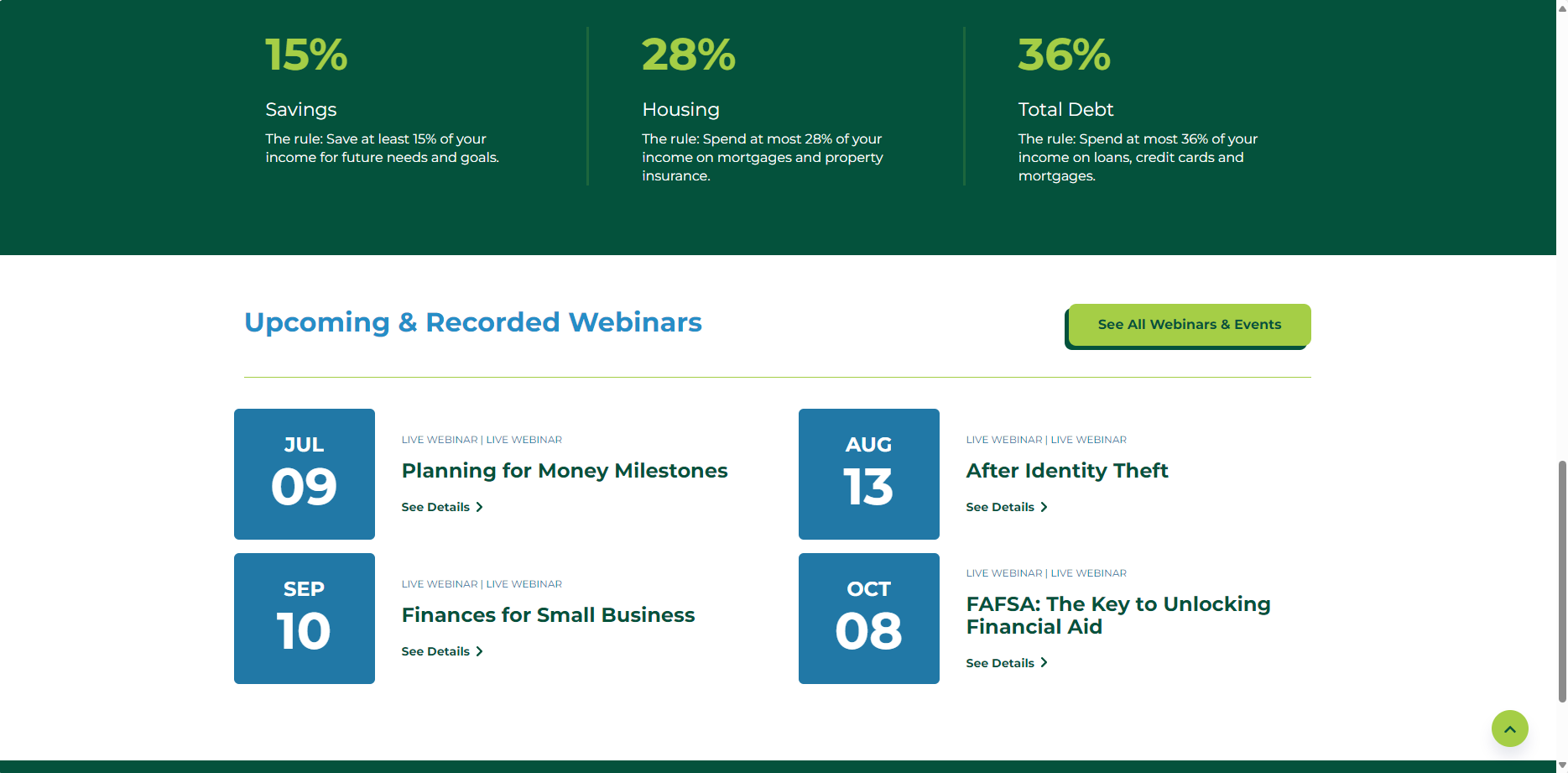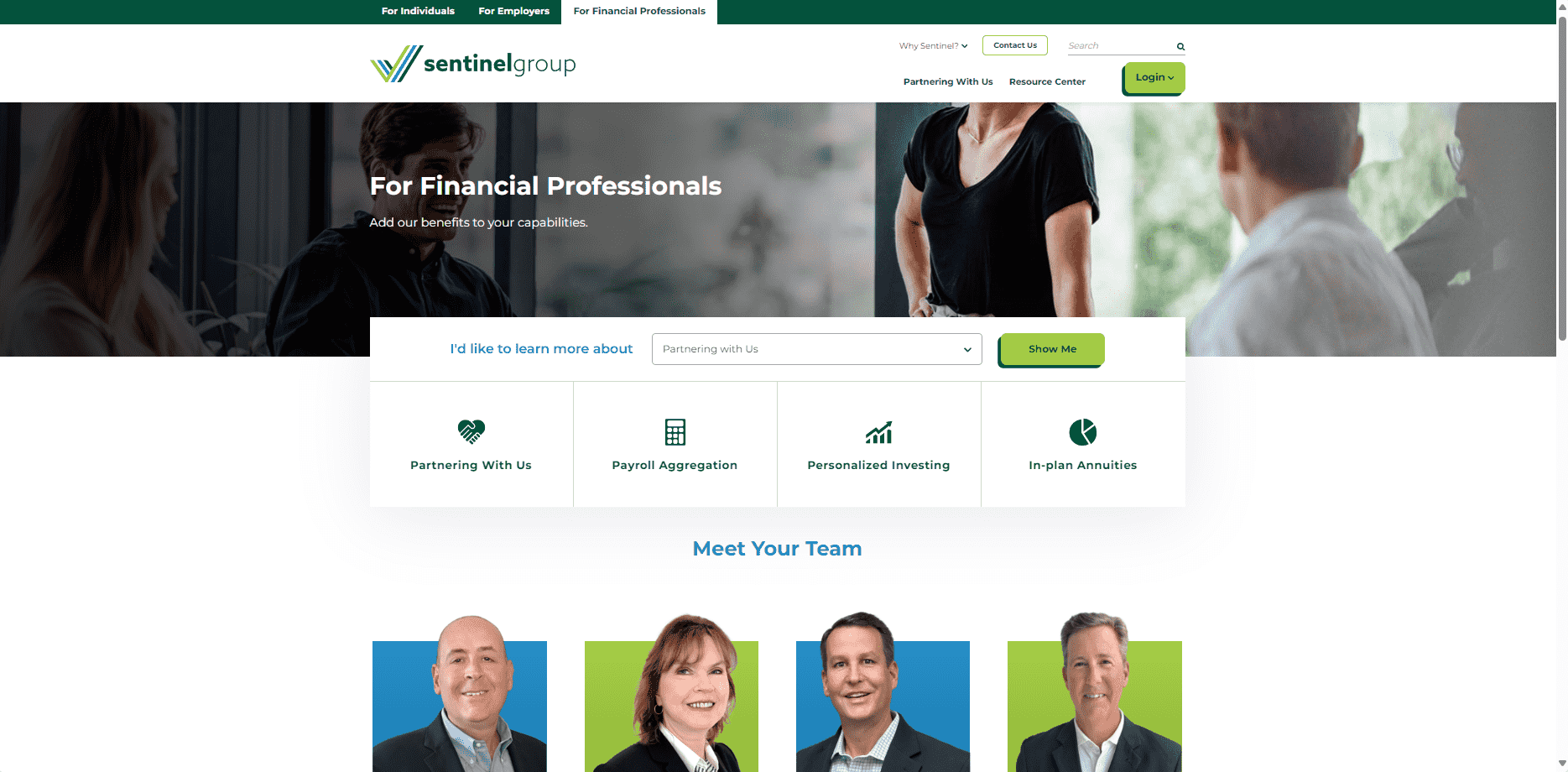SENTINEL
Services we provide:
- Discovery
- Strategy
- UX/UI design
- Website development
- Kentico implementation
About Sentinel
Sentinel is one of the largest employee benefits providers in the Northeast with 4,000+ clients and more than 250,000 plan participants. Sentinel partnered with SilverTech for their website redesign to accentuate their competitive advantages to other providers and strengthen brand messaging and company culture online. Additionally, they wanted to highlight Sentinel as a one-stop-shop benefits provider for employers and employees. Sentinel sought SilverTech’s expertise to create an experience geared towards the individual including storytelling elements through iconography, lifestyle-type imagery, and testimonials on their website.
The Process
Sentinel chose SilverTech’s recommendation of Kentico for several reasons. What appealed most to them was the easy-to-use interface for content editors, the ability to tag content clearly and effectively for multiple user groups, varied ability levels/place in the sales funnel, and the platform’s marketing automation abilities. Since the main goal of this website redesign was to create lead generation, the power and customizable functionality of the Kentico CMS coupled with the easy-to-use personalization and marketing automation features was a no brainer for Sentinel.
The Challenges
SilverTech faced several challenges throughout working on this project. One of the pains of Sentinel’s old site was that the homepage was difficult to use, asking users to act before understanding who Sentinel is. The new website clearly communicates the Sentinel brand before asking users to act. Another challenge that SilverTech faced was placing educational materials and related resources in a location and manner on the website that would be the most beneficial to users. This would make it easy for users to find information on their own and eliminate the need for Sentinel to send users direct links to the information. Sentinel loves the new website and SilverTech was able to address all the challenges of the old website.
RESULTS
5 Key Considerations When Converting to GA4
7/14/22
You probably already heard all the buzz around the next generation of Google Analytics. The switch to Google Analytics 4 isn’t going to be like those of the past and won’t be a quick and easy one-to-one shift for most companies. Universal Analytics (UA) and the now Google Analytics 4 (GA4) operate from very different frameworks and companies will now find significant differences in how their data is being tracked and measured – impacting things like existing tags in your Google Tag Manager and what metrics you use for measuring success and reports. To be successful in making the switch from UA to GA4, there are # key things to consider.
1. Reevaluate Your Tech Stack
Not using Google Tag Manager? Now’s the time to start! It’ll help you add tracking code to your website for various marketing campaigns without burdening developers with that task or slowing your site down. Google Tag Manager organizes it and loads it all in one place. It also makes adding your new GA4 property that much easier.
Are you utilizing your CMS or CRM data? GA4 is not going to replace these other powerful resources, but rather when used together, you’ll be able to make well-informed conclusions and impactful decisions about the usability of your website and campaigns that are driving traffic to it. For example, Sitefinity Insight is a powerful tool within the Sitefinity CMS that helps you better understand your customer journey and how to use marketing to drive ROI. As a reminder though, a tool like Sitefinity Insight does not replace GA4 and vice versa. They are both most powerful when used in conjunction of one another.
And don’t forget about any other tools you may be (or should be) leveraging. Be sure to integrate them with GA4 and set up UTM tracking for your campaigns whenever possible. Call tracking tools like CallRail, reporting tools like Google Data Studio or Tableau, and any email tools like Mailchimp or Pardot are just a few that should be part of your technology stack.
2. Check Your Settings
Much like UA, there are some custom setup options and settings you may want to consider for your GA4 property. For example, many organizations prefer to exclude their own internal IP and even vendor IPs from their analytics. This can be done in GA4 within the Data Stream settings. If you are running Google Ads, have a Merchant Center, or utilize Google Search Console, you’ll want to link those other tools together to get a collective view of your data.
As you start to collect and analyze data in your new property, you may come to find that visualizations and charts you may be used to are no longer readily available. Some, however, can be built and saved as a custom report.
3. Reconsider Your Measurements for Success
Many of the metrics you may be used to seeing and reporting on will no longer exist or will drastically change in GA4. While Google originally stated bounce rate would no longer exist in GA4, they recently announced it will be part of GA4 but will be calculated differently than UA. Which makes comparisons tricky, so it’s recommended to start looking at engagement rate instead. Pageviews will now be referred to as views because it includes traffic from desktop, mobile apps, and even smart TVs. There will also no longer be unique pageviews. The most significant change, however, is that GA4 is an event-based measurement model where every “hit” such as a view, scroll, or video completion is automatically labeled as an event. Gone are the days of setting up each of these type of actions as a goal. Now, an action is either an event or you can mark more significant events as a conversion.
As part of the transition to GA4, reevaluate the goals you had set up in UA and discuss your business goals with your internal teams, advertising partners, and other stakeholders to determine and reset what your new GA4 should track.
4. Create and Customize Report Dashboards
GA4 offers a more robust internal report builder that provides your organization with more custom options for business reporting, automated reports, and dashboard creation. During your evaluation of your marketing and technology stack, you’ll want to consider what reporting dashboard you want to leverage. The interface of Google Analytics isn’t for everyone and GA4 is no different. You may want to consider a more robust reporting dashboard that brings in data from multiple sources. Google Data Studio is a great option for this and it’s free! Our team can build you a custom dashboard for you and your teams that will help identify trends or areas of improvement.
5. Get Everyone on Board
Create a training and communication plan so any end-users of your GA4 account are informed. The interface and dashboard of GA4 is much different than what we have been used to in the past. All end-users should be able to understand the data and how different metrics can be used to find the insights their team relies on. Want a walkthrough of GA4? Or need help setting up custom reports? Our team can help! Contact us to learn more.




